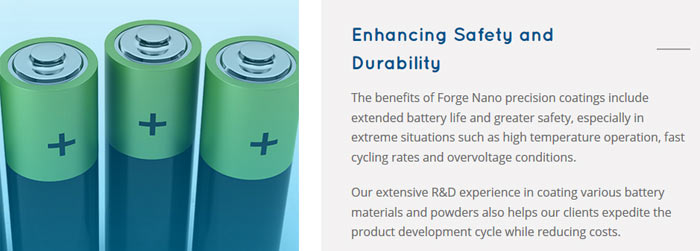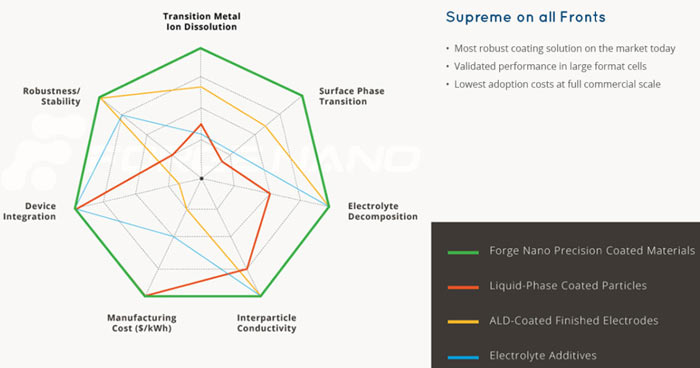Samsung first officially admitted its Galaxy Note7 fire safety issues back at the beginning of September and began a recall program. Unfortunately for Samsung, and Note7 buyers, the recall due to the "battery cell issue" wasn't successful – even refreshed Note7 smartphones were prone to spontaneous combustion. Thus Samsung gave up on the Note7 in October, with the whole affair costing Samsung 'billions' plus its reputation. If only it could have made the smartphone battery power systems safe…
Forge Nano of Denver, Colorado reckons Samsung's flaming mess could have been avoided if it had used Nanocoated Cathode Powders. In an interview with the EETimes, Forge Nano VP of engineering, Dr. James Trevey, said that his firm's nano coatings raise the breakdown temperature of Li-ion batteries (with flammable electrolytes) so that they are much further into the safe zone, and thus avoid thermal runaway.

In Forge Nano's process nano-pattern atomic layer deposition (ALD) is used to produce coatings which are chemically bonded to a cathode surface. It is thought that in Samsung's Note7 battery the internal separator between the two flammable electrolytes melted, allowing its full charge to be released instantaneously igniting a chemical reaction between the electrolytes causing them to explode. "Independent testing and research has shown that ALD coatings can prevent or reduce the formation of these unwanted chemical species within Li-Ion batteries that can lead exothermic reactions," Dr Trevey told the EETimes. Forge Nano has just won $20 million 'Series A' funding to push ahead its developments and plans for a 10x expansion in its factory output of nano-structured materials.

Beyond the well publicised Galaxy Note7 problems, Li-ion battery overheating and combusting issues have caused hazards in other tech devices and even in aircraft such as the Boeing 787 Dreamliner.













